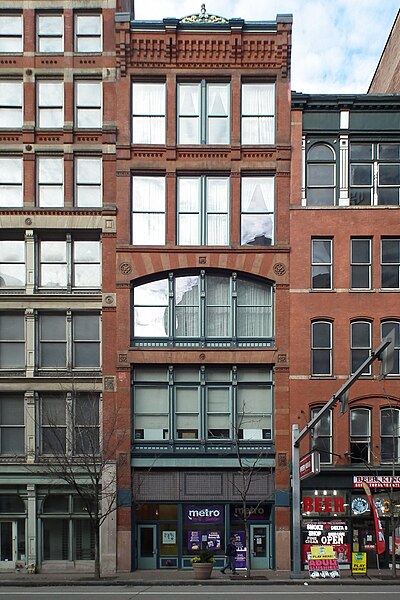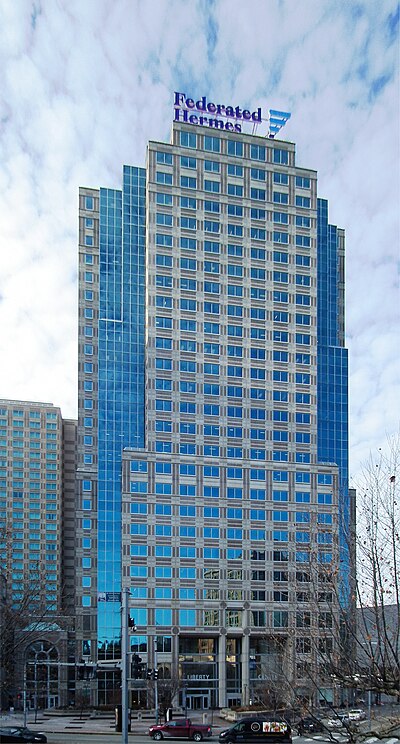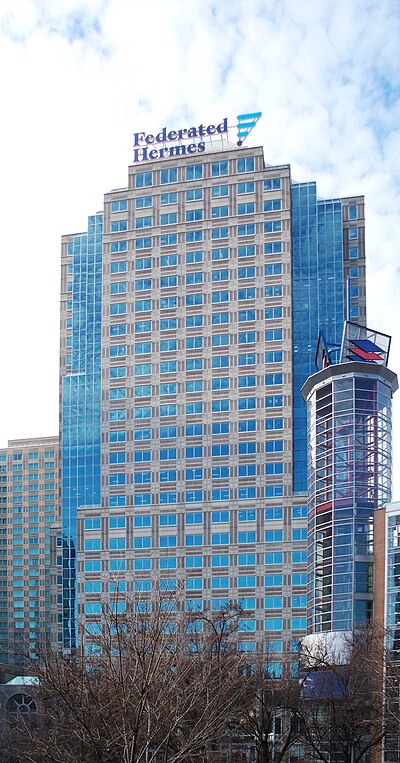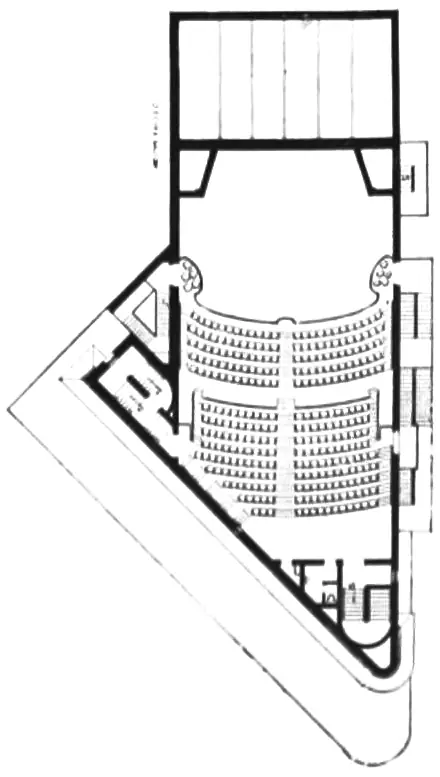
-
Liberty Avenue
-
Liberty Avenue
-
907 Liberty Avenue

Penn and Liberty Avenues are living museums of Victorian downtown architecture: in very few other places can we get such a vivid impression of what a big city looked like in Victorian times before the age of skyscrapers began. From old maps, we can see that this splendid building appears to have been put up in the 1880s for one W. T. Shannon, who was still the owner in 1923. The upper floors are now loft apartments.
-
Cast-Iron Front on Liberty Avenue
-
August Wilson African American Cultural Center

Old Pa Pitt nursed a secret grudge against this building for years, for the very petty reason that it replaced the old Aldine Theatre, which he had hoped to see restored as part of the revival of the theater district downtown. But on its own merits, the August Wilson African American Cultural Center is a striking building that makes the most of its triangular site, and certainly no Pittsburgher better deserves the naming rights to the first theater to meet our eyes on Liberty Avenue. San Francisco’s Allison Grace Williams was the lead architect, and she made the building into a kind of announcement for the Cultural District: here, it tells us, you are entering a place where great things are happening.
-
Federated Tower

For a very brief period in the 1980s, the style known as “Postmodernism,” which perhaps we might better call the Art Deco Revival, was the ruling trend in skyscraper design. Fortunately Pittsburgh grew a bountiful crop of skyscrapers in the Postmodern decade, and here is one of the better ones. In it we see the hallmarks of postmodernism: a return to some of the streamlined classicism of the Art Deco period, along with a sensitive (and expensive) variation of materials that gives the building more texture than the standard modernist glass wall. This skyscraper is part of Liberty Center, which was begun in 1982 and finished in 1986; the architects were Burt Hill Kosar Rittelman.

-
Store Building at Tenth and Liberty

Maximilian Nirdlinger, who is on old Pa Pitt’s short list of architects whose names are most fun to say, designed this little store building in 1914, and we would guess it was completed by 1915. It was a very small and inexpensive project for downtown, but Nirdlinger made sure it was a tasteful one; and it has been updated without losing its essential character, which is classical by way of German-art-magazine modern.


-
Renovating the Triangle Building
-
The Old Horne’s

Not the one with the Christmas tree, but the one before that. Horne’s was Pittsburgh’s first department store, and in 1880 the already-well-established Joseph Horne Company built this grand mercantile palace. It was Horne’s for only about seventeen years: in 1897, the department store moved to its much larger location at Penn Avenue and Stanwix Street, where it would stay for almost a century. After that, the Pittsburgh Post moved into this building, and later the Sun as well, when they were under the same ownership.

The Wikipedia article on the Joseph Horne Company is a mess, and old Pa Pitt ought to work on rewriting it, except that it would require extensive research. Among other things, it tells us (without citing a source) that this building was built in 1881 (which may be when it opened) and was designed by Charles Tattersall Ingham, who would have been four years old when he designed it. Decent work for a four-year-old. However…

The lower floors got a complete makeover in 1920, when the building was a newspaper headquarters, and that part of the building is in the trademark Ingham & Boyd style: rigorously symmetrical, with meticulously correct classical detailing. Charles Tattersall Ingham would have been 44 years old then, right in the middle of a prosperous career. Old Pa Pitt will therefore tentatively attribute that 1920 remodeling to Ingham & Boyd.

Do you have plans for a luxury-apartment project downtown? Here is your opportunity. Everyone else is doing it.

-
The Liberty Theater As It Was Built

Update: Once in a while old Pa Pitt has a chance to boast about his architectural instincts, and here is one of those occasions. In the original article, he wrote that he suspected Edward B Lee of having designed the remodeling of the theater into an office building. He was right. Source: The American Contractor, December 15, 1923: “Store & Office Bldg. (remod. from theater): $150,000. 5 sty. & bas. H. tile. Liberty av. & Strawberry Alley. Archt. E. B. Lee, Chamber of Commerce bldg. Owner The Fidelity Title & Trust Co., Wilson A. Shaw, chrm. of bd., 343 Fourth av. Gen. contr. let to Cuthbert Bros., Bessemer bldg.”
The original text of Father Pitt’s article follows.
Edward B. Lee was the architect of the Liberty Theater—or Theatre, as theatrical people often insist on spelling it—when it was built in 1912. These pictures were published in The Brickbuilder in 1913, so they show the theater as it was when it was new. Either the theater failed or the owners decided it would be more profitable as an office building, because only eleven years later, in 1924,1 it was remodeled into the Baum Building, and it still stands today.

The shell and outlines are the same, but quite a bit was changed externally. Old Pa Pitt suspects that Lee was the architect of these changes, too, and they were accomplished so elegantly that we would never know the building had not been planned that way from the beginning.
These small drawings (orchestra, first balcony, second balcony) show the aggressive adaptations Mr. Lee had to make to the irregular shape of the lot—a common difficulty for buildings on the southeast side of Liberty Avenue, where the two grids of the irrationally rationalistic eighteenth-century street plan collide.

Detail over the entrance. These decorations disappeared when the building was converted to offices.

Corner detail. The cornice and pilasters survive, but the elaborate terra-cotta decoration between the pilasters vanished in 1924.
- In the original version of this article, Father Pitt had given the date as 1920, following a city architectural survey. The listing from the American Contractor proves that the date was actually no earlier than 1924. ↩︎






